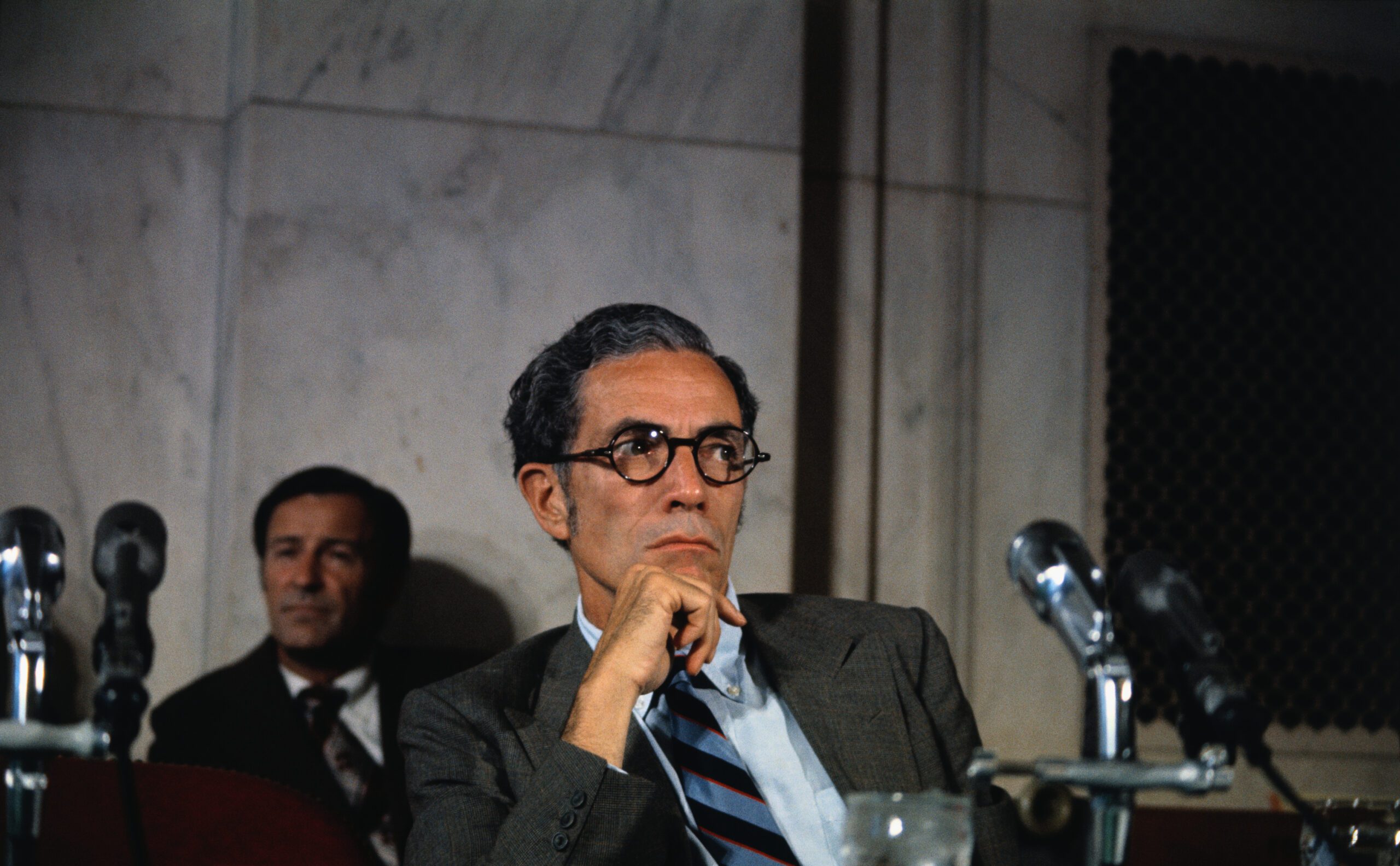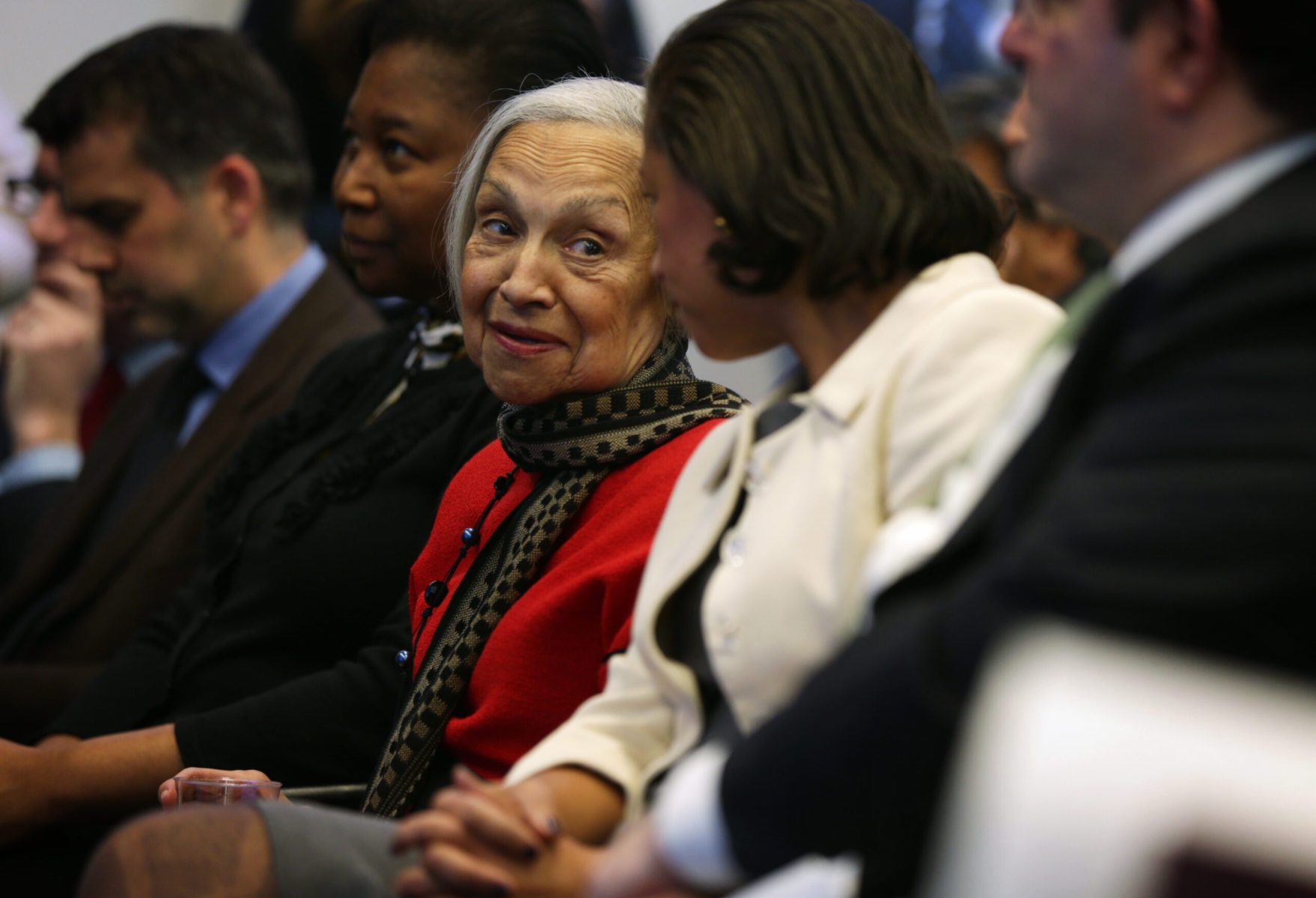Without Lois Dickson Rice, the Pell Grant “would not have come into existence.”
That’s how Clay Pell IV, whose grandfather sponsored the creation of the grants, described Rice’s role in the development of the Pell Grant upon her death in 2017. The grants make college more affordable for students in financial need and have been associated with Pell’s grandfather, Sen. Claiborne Pell of Rhode Island, since their 1972 creation. The late lawmaker was the main sponsor of the legislation that created the Basic Educational Opportunity Grant Program, the name of which was updated in 1980 to highlight the senator’s role in the federal subsidy.
But Rice, an education policy expert, worked closely with Pell to bring the grant to fruition. As the program celebrates its 50th anniversary this year, and President Joe Biden’s administration offered Pell Grant recipients $20,000 in student debt relief, Rice is receiving much deserved credit for her efforts, say those familiar with her work.
“It’s difficult to overstate how impactful her work was,” said Katharine Meyer, a fellow in the governance studies program for the Brown Center on Education Policy at the Brookings Institution, where Rice was a guest scholar. “She really advocated based on her understanding of the research and on her understanding of the lived experiences of low-income students that some sort of federal investment in grant-based aid was going to be necessary to ensure that students who wanted to pursue higher education wouldn’t be barred from doing so.”
In February, the National Association of Independent Colleges and Universities (NAICU) posthumously awarded its 2022 Advocacy Award for Independent Higher Education to Rice, the “mother of the Pell Grant,” for her work on education policy. This month, the NPR program “Code Switch” profiled Rice in an episode, introducing a mainstream audience to her advocacy for low-income students. To date, more than 80 million students have benefited from the Pell Grant.
-
More education coverage
- What is ‘soft’ censorship? When school districts don’t ban books, they still limit student access
- Higher pay, smaller class sizes, more special ed support: Why Seattle teachers are striking
- Women — particularly women of color — stand to benefit most from Biden’s student loan relief plan
Rice worked to ensure students from all economic backgrounds could afford a higher education in part because of the financial barriers her own family overcame to send her and four siblings to college. She was born in 1933 in Portland, Maine, to a father employed as a janitor and a mother working as a maid. Both of her parents were Jamaican immigrants, and neither graduated from high school.
“She dedicated her life to the service of educating low-income students in this country, and she came at that from her own personal experience growing up in a in a working-class family in Maine and personally experiencing the transformative effect of higher education on her life trajectory and really dedicated her life to paying that forward to future students,” Meyer said.
Valedictorian of her nearly all-White high school, Rice went on to graduate in 1954 from the all-women’s Radcliffe College, now part of Harvard. After college, she led counseling services at the National Scholarship Service and Fund for Negro Students. In 1959, she moved on to the College Entrance Examination Board, where she served as an executive, including as vice president. Now known as the College Board, the nonprofit works to expand higher education access, and Rice carried out its mission by helping to design the Pell Grant program. Rather than providing loans to low-income students that they would have to repay, Pell Grants give these students financial awards that go up to $6,895 per school year today.
“In higher education, the Pell Grant is the best indicator that we have for low income,” said Wil Del Pilar, vice president of higher education policy and practice for The Education Trust, a nonprofit that advocates for students of color and students from low-income families. “It’s essentially a need-based grant targeted towards the folks with the greatest need or the folks who struggle the most to pay for college.” Nearly all Pell Grant recipients come from households with annual incomes of less than $60,000.
Getting the Pell Grant enacted was not easy. Rice, Pell and the bill’s other champions had to work doggedly to sway lawmakers to pass and fund the legislation. Supporters included everyone from students to community college presidents, but Rice stood out.

“She was somebody who believed, along with Sen. Pell, that the money should go to the students based on income, and it’s interesting to me because that isn’t where most of the institutions were,” said Sarah Flanagan, NAICU’s vice president of government relations and policy development and former higher ed specialist for Sen. Pell. “At the time, they wanted the money to kind of come to them to determine how to divvy it up, but she just had this kind of different view … that was really based on principle and policy.”
At a time when few women of color had influence over federal policy, Rice leveraged her role as a College Board executive to persuade lawmakers to make college more economically accessible.
After the grant was established, Rice continued to draw attention to its benefits in the 1970s and early 1980s. She continued her career in the 1990s as a guest scholar at the Brookings Institution, where she researched education policy.
“She really exemplified the best of a Brookings scholar — somebody who was passionate about policy and passionate about understanding how policies get advanced, and really rooting her analyses and the proposals she put forward on research as well as the lived experiences of the people who those policies would impact,” Meyer said.
Rice is now remembered as someone who helped millions of college students from low-income households obtain a higher education through Pell Grants. Among them is Taylor Jennings-Brown, recipient of NPR’s Kroc Fellowship, a program designed to develop the next generation of public media journalists. The “Code Switch” show about Rice included Jennings-Brown’s reporting, but before she worked on the episode, the 2021 college grad knew little about the origins of the Pell Grant. She was floored to discover that “the mother of the Pell Grant” came from a Black immigrant family with working-class parents but managed to shape education policy and serve on several corporate boards.
“Even now, the stuff that she accomplished would be major, and we’re decades past that era,” Jennings-Brown told The 19th. “So many people benefit off of something that happened in Washington in the ’70s, and a Black woman was a major part of that. Something about that is just so wild, and it’s impacted so many Black and Brown children.”
Jennings-Brown continues to benefit from being a Pell Grant recipient. She graduated from the University of South Carolina last year with student loans amounting to $27,000. But in August, the Biden administration announced that it will forgive $20,000 of student debt for Pell recipients, which will significantly reduce her student debt.
“I’m grateful for Pell, very grateful,” she said.
As the years have passed and college tuition has risen, however, the Pell Grant doesn’t go as far as it once did in relieving the economic burdens associated with a higher education. Rice’s daughter, Susan Rice, has also worked in policy, currently for the Biden administration as director of the Domestic Policy Council of the United States. Susan Rice told “Code Switch” that the grant once covered about 80 percent of college expenses, but it now covers only about 30 percent.
The Education Trust’s Del Pilar agrees that the Pell Grant no longer covers college expenses sufficiently.
“We, among a lot of other folks, have been pushing for doubling Pell,” he said. “But we have to double Pell along with holding states accountable for investing in higher education. One of the reasons that the cost of college has increased so much … is that states have started investing less in institutions of higher education, leading to more of the burden being placed on students and families.”
A federal-state partnership that holds states accountable for investing in higher education needs to be created to make college more affordable, he added. Then, if Pell doubles, low-income students will have a much lower financial burden than they have currently.
As calls to double the Pell Grant grow, Rice continues to receive praise for her efforts and their long-lasting influence. Meyer cited programs such as the Second Chance Pell Experiment, which former President Barack Obama’s administration introduced in 2015 to help incarcerated people pursue higher education and reduce recidivism rates. The Biden administration expanded access to Second Chance Pell during the 2022-23 school year.
In short, Pell “remains a program for future innovation for the Department of Education,” Meyer said. “It’s really transformed over the past 50 years from what was already a monumental investment in low-income education to being a real springboard for creative solutions to support students’ higher educational pursuit.”
While accepting the NAICU’s Advocacy Award for her mother in February, Susan Rice said that neither Lois Rice nor Pell, who died in 2009, knew that their contributions would have a lengthy legacy.
“They didn’t necessarily set out to transform the landscape of higher education,” she said. “But, as we reflect on the 50th anniversary of Pell, it is amazing to consider how profoundly they did just that.”







